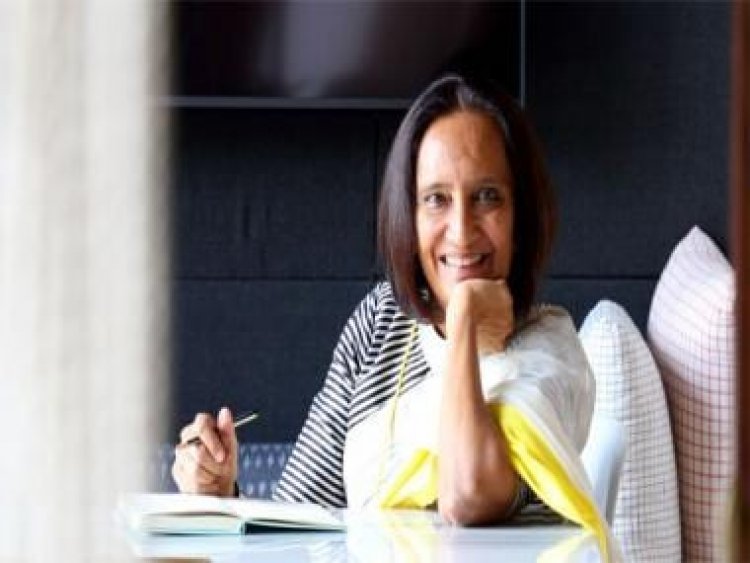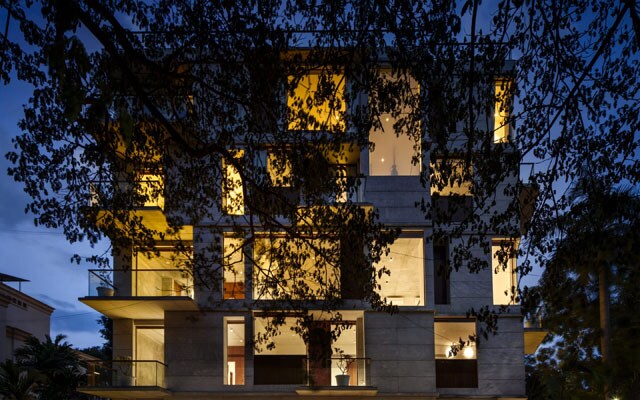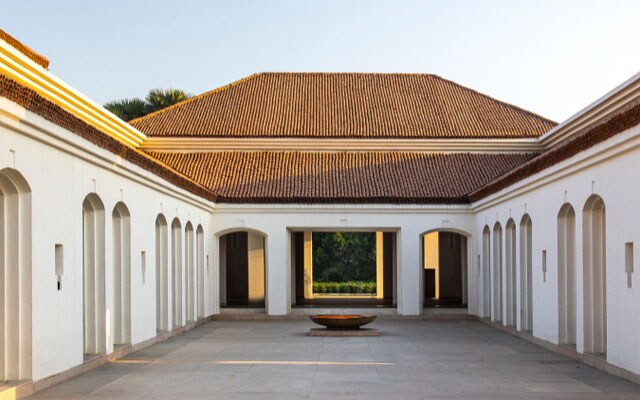Shimul Javeri Kadri: 'All good architects have a little schizophrenia'
Shimul Javeri Kadri: 'All good architects have a little schizophrenia'

THERE are certain people who are impossible to describe just by their professions alone. Their insight, influence and worldliness are so expansive, they are never just one thing. Shimul Javeri Kadri is a celebrated architect, but also a diligent urban planner, a textile savant, a culture vulture, a head turner, a romantic ruralist, and an encyclopedia of all things design.
Despite being married into one of the most successful architectural firms of its time – her husband Rahul Kadri and father-in-law IM Kadri are renowned for their inventive work across the country, like the Nehru Centre and Haj House in Mumbai, and the Taj Mahal hotels in New Delhi and Fort Aguada – Shimul braved her own firm. “We both have different answers to this one. For me, I was very clear that I didn’t want to be a part of a family business. My feminist outlook was important to me. When you work with your husband, and when it’s crunch time, you fall between the cracks. There is enough to navigate in a marriage, I didn’t want to tie in the professional as well,” she smiles. SJK Architects was launched in 1990, and quickly became a design company that spoke in its own unique tongue and picked up multiple prestigious awards along the way. “I was terrified when I launched my firm. I was confused,” Shimul, 60, tells me.

“All good architects have a little schizophrenia– we want to work for the poor but our clientele is the wealthy. In 1990, I was full of ideas and idealism. I was torn between working for the government on urban planning, low-cost housing, women’s issues and building for India, and the urgent need to be a designer. These were separate thoughts but I hoped one day they would meet.” She picked a Masters in Urban Planning over Architecture in University of Michigan, Ann Arbor, as it involved more scintillating concepts such as politics, economics, sociology. She would later teach feminism at the university too. When she realised her ideas of beauty all centred around India, that she thought of colours, hues and tone that culturally defined India, she knew she had to come back home. SJK brought on an aesthetic that engaged with nature constantly. It brought the outside in, and took the inside out.
There were always open spaces within closed spaces, and light and air had to be brought in from wherever they could. “That is inherently how humanity was meant to live – in tune with nature. I build with sunlight and natural ventilation in mind, they are our baselines. I have intense interest in what India has to offer culturally, climatically, ecologically, and you can say I am the ultimate nationalist,” she laughs. In the 1980s, architecture saw a resurgence of the vernacular. Laurie Baker had begun to build indigenously in Kerala. Hassan Fathy did the same in Egypt. Charles Correa, Shimul says, had begun to redefine the idiom of the vernacular and the contemporary. “The liberalisation of the 1990s came and disrupted everything. We began to believe that greed is good,” she explains.

“Honestly, even today, building with purpose and meaning is not the norm. Most architecture is commercial and aspirational, we like everything new and shiny. The idealism and vision that thinking architects bring is still a marginal enterprise.” Shimul’s penchant for working on public buildings has its challenges. “Public spaces are so exciting but they are not the most commercially viable spaces. It usually gets taken on by the non-profit ar, and ends up having money constraints, governance issues, and just too much time. We have designed a Jain museum in Ahmedabad and we’ve been at it for 10 years thanks to some administrative issues. I love university complexes, because they shape young minds. But they are always economically built, often one block at a time,” she adds.
Among her most exciting projects is a hotel in Bodhgaya that she recently completed. “Working in Bihar has two big things to consider. First, it was the heart of Indian civilisation for a long time and thus culturally rich. Second, the depths of poverty it has gone to today. One is faced with the dilemma of expressing the richness of the culture here, this is where Buddha received his Enlightenment, and ensure you don’t bring something alien to this pre-Liberalisation atmosphere,” she says.
So, she used a lot of brick as kilns were easily available everywhere as a local building technique, and so many classic terracotta tiles that needed farmers from 26 villages to make them. The other famous works of the SJK firm are the Dasavatara hotel in Tirupati, the beautiful Leaf House private residence in Alibaug, Mahindra’s Automobile Design Studio in Mumbai, and the newly completed residential bungalow on Boat Club Road, Chennai. She has an exciting new hotel at Hampi coming up. “The Boat Club Road home has four duplex apartments in one building, it is for our client Viju Mahtaney who has been with us for 30 years. It’s now a relationship of implicit trust. The challenge here was that we wanted balconies and terraces and not just a luxury building defined by elevation. Chennai is a coastal town so has trees and breeze, but also mosquitoes and state bye laws that made so many things tough, even overhangs,” she adds.

Shimul’s penchant for all things natural is evident in her textile-first wardrobe too. “I am such a lover of craft and design that I totally enjoy our textiles. Dressing up is no effort at all,” she laughs. “I love to see Indian fashion designers use craft the way they do and I invest in it.” Both architecture and fashion are mood fixes, bringing on an emotional reaction. “Design has a subliminal effect on us, and we need to be sensitive to it in order to understand its purpose,” she says.
Namrata Zakaria is a seasoned writer and editor, and a chronicler of social and cultural trends. Her first book, on late fashion designer Wendell Rodricks’ Moda Goa museum, is due to be published shortly. Zakaria is especially known for her insider’s take on fashion, luxury and social entrepreneurship in India. Her writing is appreciated for shaping opinions, busting myths, making reputations and sometimes breaking the odd career. Zakaria is also involved in putting together philanthropic efforts in the field of economic and environmental sustainability.
Read all the Latest News, Trending News, Cricket News, Bollywood News, India News and Entertainment News here. Follow us on Facebook, Twitter and Instagram.
What's Your Reaction?


























































